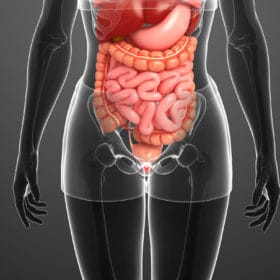In recent years, nutrition has emerged as a central topic of controversy in weight training, which has sometimes had abstruse effects on the fitness community. Various nutritional extremes have even led to real enmities between the followers of the various nutritional ideologies. Not least due to this fact, the sensible nature of totalitarian forms of nutrition has recently been repeatedly criticized by athletes and scientists. It is therefore not necessarily surprising that the Flexible dietingwhich is also known as "If it fits your macros" (IIFYM) is celebrating a true renaissance. In this article, you can find out what this concept is all about and why it is a sensible alternative for many athletes.
Why clean eating is overrated
However, before we delve deeper into the subject of flexible dieting, it is worth taking a critical look at one of the most widespread nutritional concepts that oppose flexible dieting. As it is impossible to correctly depict the entire range of diets on the subject, we will limit ourselves here to clean eating, in the course of which only particularly nutritious and healthy foods are consumed and unhealthy foods are strictly avoided. A critical observer should already be aware that the concept of clean eating has a significant drawback, as there is simply no generally valid definition of which foods are considered to be particularly valuable and healthy. The situation is similar with regard to the classification of unhealthy foods. There are no universal standards here either. Rather, almost every athlete who follows this credo applies and propagates their own standards, which in turn leads to irritation in the fitness community.
What actually is flexible dieting?
Flexible Dieting is an approach that simplifies nutrition in the field of weight training in a shocking way and therefore eliminates many of the problems associated with extremely specific diets. IIFYM is based on the assumption that it is not the individual food itself, but the calorie balance at the end of the day that determines progress towards the goal you have set yourself. This conclusion is quite logical, as the source of a unit of energy does not really matter to the body. A calorie is simply a calorie, just as a ton of steel has the same weight as a ton of down. Admittedly, the matter is not quite that simple, because in addition to the calorie balance, the macronutrient distribution must also be taken into account to ensure that the body is optimally supplied with nutrients. The special feature of flexible dieting, however, is that the source of the carbohydrates, proteins and fats you consume is almost completely irrelevant. So it doesn't matter whether a portion of 30 grams of protein comes from canned tuna or a hamburger. All that matters is that you reach both your calorie target and your macronutrient target at the end of the day. Conversely, it is clear that flexible dieting is not a free pass for unrestrained gluttony, but merely simplifies everyday eating. Of course, this form of nutrition is not suitable for ambitious competitive athletes in the on-season, as it does not allow you to get the most out of your physical capabilities. On the contrary, the approach based on the Pareto rule is an opportunity for recreational athletes to achieve the greatest possible yield in the form of muscle mass or fat loss with comparatively little effort.
In order to set up your energy balance for flexible dieting so that you can put your plan into practice, you first need to calculate your energy requirements, as this is the only way to draw up an energy balance that reflects your daily consumption. To do this, multiply your body weight by a factor of 24 to obtain the basal metabolic rate, which indicates how much energy your body burns in 24 hours without you actively exercising. The basal metabolic rate must then be multiplied by the so-called PAL value, which provides information about a person's level of activity. You can find out which value applies to you in the following list:
- PAL 1.2 (predominantly sedentary activity / no workout)
- PAL 1.4 (predominantly light activity / 1-3 training sessions per week)
- PAL 1.6 (moderate activity / 3-5 training sessions per week)
- PAL 1.8 (active lifestyle / 6-7 training sessions per week)
- PAL 2.0 (hard physical work / 6-7 training sessions per week)
The result of this calculation is the number of calories you need to consume every day to maintain your body weight under the given circumstances. If you want to build muscle as part of Flexible Dieting, you add 300 kilocalories. If, on the other hand, you want to reduce body fat, you subtract 500 kilocalories.
How to determine the amount of macronutrients
Now that you know how much energy you need to consume each day, it's time to calculate the macronutrient distribution. First and foremost, of course, are proteins, which are essential building blocks for the body to build new tissue. Instead of resorting to complex calculations or windy statements, you should simply stick to a simple rule of thumb: Two grams of protein per kilogram of body weight per day. However, if your body fat percentage is significantly higher than 20 percent, you should use your body's lean mass for the calculation by subtracting the fat mass from your body weight. The procedure for fat is similar to that for protein. The only difference compared to protein consumption is the fact that you only consume one gram of fat per kilogram of body weight per day. Finally, multiply the daily protein intake by a factor of four and the fat intake by a factor of nine to get the resulting number of calories. Now subtract the result from the calorie target determined in advance and divide the difference by four to get the amount of carbohydrates in grams that you need to top up your energy balance with. Even if you find it hard to believe, that's it. Stick to these customized guidelines and success is guaranteed.




